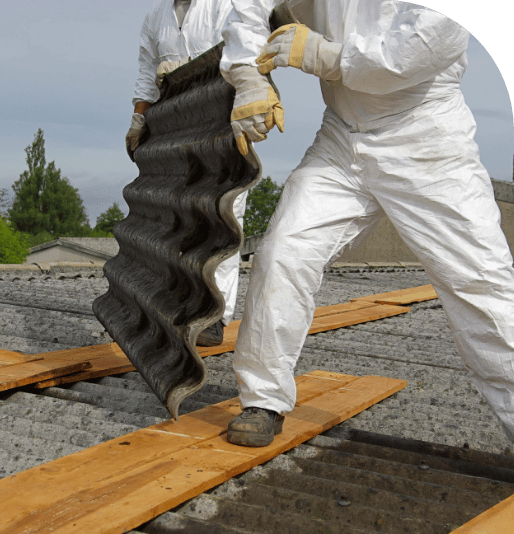Table of Contents
Introduction:
Asbestos has long been used in various industries due to its fire-resistant properties. However, it poses serious health risks, including lung cancer, asbestosis, and mesothelioma. Asbestos removal is crucial for the safety of individuals and the environment. In this comprehensive guide, we will explore the importance of asbestos removal and provide a step-by-step approach to safely deal with this hazardous substance.
Understanding Asbestos
Asbestos is a naturally occurring mineral that was widely used in construction materials until its ban in the late 20th century. Its microscopic fibers, when inhaled, can cause significant health problems. Common sources of asbestos in residential and commercial properties include insulation, roofing material, floor tiles, and pipe insulation.
When Is Asbestos Removal Necessary?
Asbestos removal becomes a legal requirement in certain situations, such as when renovating or demolishing a building. However, proactive asbestos testing is crucial to identify potential risks in a timely manner. It’s essential to understand that even when it’s not mandatory, voluntary asbestos removal can significantly reduce the risk of exposure.
Hiring Professional Asbestos Removal Services
Engaging certified and reputable asbestos removal companies is crucial to ensure safe and thorough removal. When choosing a service provider, look for qualifications and certifications such as the Asbestos Hazard Emergency Response Act (AHERA) certification. The professionals will conduct a site assessment, determine the extent of asbestos presence, and employ appropriate removal methods.
The following table outlines the different asbestos removal methods commonly used:
| Method | Description |
| Encapsulation | Coating asbestos-containing material with a sealant to prevent fiber release |
| Enclosure | Creating a physical barrier around asbestos-containing material to prevent exposure |
| Complete Removal | Removing the asbestos-containing materials entirely, ensuring no residue is left behind |
Professionals follow strict safety measures during removal, including wearing personal protective equipment (PPE) and implementing strict containment procedures to prevent the spread of asbestos fibers.
DIY Asbestos Removal: Pros and Cons
While it is possible to handle small-scale asbestos removal yourself, it is essential to understand the risks involved. Inadequate knowledge or improper procedures can lead to further contamination and health risks. It is recommended to hire professionals for larger or more complex projects.
If you decide to proceed with DIY removal, here’s a checklist to ensure safety:
- [ ] Obtain proper PPE, including a respirator, disposable coveralls, gloves, and safety goggles.
- [ ] Wet the asbestos-containing material using a misting spray to minimize fiber release.
- [ ] Use hand tools instead of power tools to minimize generating dust.
- [ ] Carefully remove the material without breaking it, keeping it intact.
- [ ] Double bag the asbestos waste using specifically labeled disposal bags.
Ensure you comply with local regulations and guidelines for disposal and prioritize your safety at all times.
Asbestos Disposal: What You Need to Know
Asbestos waste should never be disposed of casually. Proper packaging, labeling, and transportation are essential to prevent further contamination. Local authorities often have specific regulations for asbestos disposal, so consult with them or hire professionals for the safe transportation and disposal of the waste.
Here is a checklist for proper asbestos disposal:
- Double bag the asbestos material, ensuring the bags are properly sealed.
- Label the bags as “Asbestos Waste” to alert waste management personnel.
- Seek licensed and approved asbestos waste facilities for disposal.
Preventing Asbestos Exposure in the Future
Taking preventive measures can minimize the risk of asbestos exposure. Regular inspections of buildings, especially those constructed before the 1990s, are crucial to identify potential asbestos-containing materials. Maintain these materials in good condition, and if necessary, consider engaging professionals for inspection and removal.
Spread awareness about the dangers of asbestos and educate others on the importance of proper removal and disposal. By taking simple steps, we can contribute to a safer environment and protect ourselves from the hazards of asbestos.
Conclusion
Asbestos removal is vital for our safety and the well-being of future generations. Whether you choose to hire professionals or handle asbestos removal yourself, following safety protocols is paramount. Prioritize your health, adhere to regulations, and collaborate with certified professionals when needed. By taking these precautions, we can eliminate the risks associated with asbestos exposure and create a healthier living environment for all.
Remember, asbestos removal is not something to take lightly. Prioritize your safety and consult with professionals when necessary. Spread awareness, and together, we can create safer living and working spaces for everyone.
















